UP government signs lease agreement with AAI to transfer land for Ayodhya Airport
Radhika Bansal
08 Apr 2022
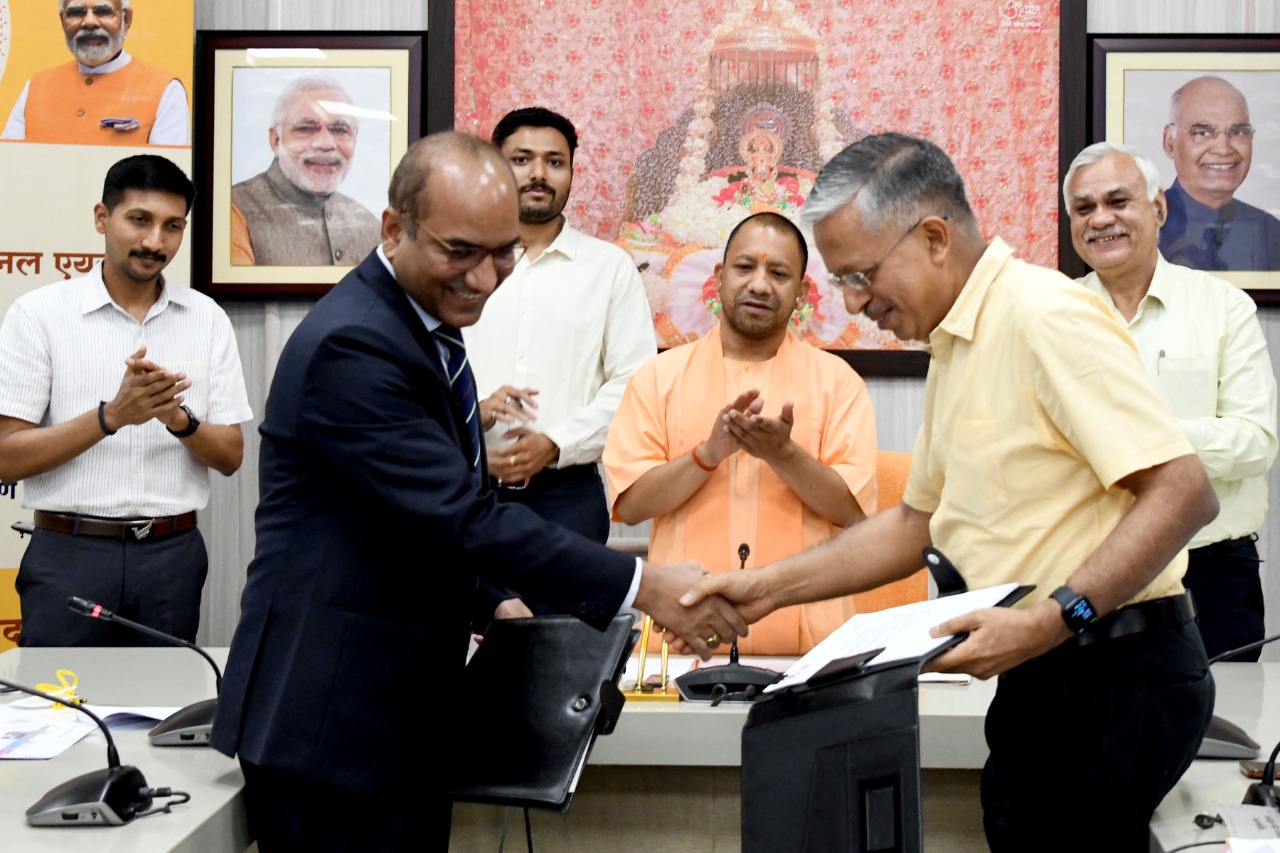
In a big leap towards the construction of Ayodhya International Airport, named Maryada Purushottam Shri Ram International Airport, the Uttar Pradesh Civil Aviation department signed a lease agreement with the Airports Authority of India (AAI) on Thursday, April 7 to fortify the transfer of 317.86 acres of land to the latter to give shape to the project.
The land lease agreement was signed in the presence of UP CM Yogi Adityanath. The airport is tentatively planned at a location 10 km from the Ram Janmabhoomi premises where work on the Ram Temple is going ahead on a war footing.
UP government signs lease agreement with AAI to transfer land for Ayodhya Airport
In a bid to push the temple town of Ayodhya on the global tourism map further and establish it as the global spiritual capital, CM Yogi Adityanath, who has envisioned the makeover of Ayodhya as ‘Navya Ayodhya’ with a series of ongoing development projects, emphasized on the need to get the proposed international airport operational by the time the idol of Ram Lalla is placed in the 'Garbh Griha' (Sanctum Sanctorum) of the upcoming Ram Temple at the Ram Janmabhoomi premises -- expected by the end of 2023.
“Lord Ram had returned to Ayodhya (after a 14-year exile) in Pushpak Viman. When his idol is placed and consecrated in the Sanctum Sanctorum of the upcoming temple on Janmabhoomi, we should try to see that the airport is also operational,” said the CM while exhorting the authorities concerned to complete the project at the earliest.
The proposed airport will be constructed under the Regional Connectivity Scheme (RCS) of the Centre. “The state government will provide all possible assistance in ensuring timely completion of the project,” the CM said exhibiting his government’s intent to bring both the airport and the Ram temple to concrete shape before the 2024 Lok Sabha elections.
Ayodhya airport must be operational before Ram Temple, says UP CM Yogi Adityanath
The agreement signed on Thursday, April 7 will be part of the first phase in which the state government plans to get small aircraft, essentially ATR, operational.
The second and the third phase will witness the expansion of the project to an additional 497 acres of land making the project functional for bigger aircraft. The total land which has been identified by the state government for the project is to the tune of 821 acres.
As per official sources, while the state government signed the lease agreement for 317.85 acres of land with the AAI, around 86 acres of land is yet to be acquired by it.
The agreement signed on Thursday, April 7 will be part of the first phase in which the state government plans to get small aircraft, essentially ATR, operational.
Moreover, the state government has released an amount to the tune of INR 1008.77 crores for land acquisition and development of the Ayodhya International Airport. In the first phase, the state government plans to establish air connectivity between Ayodhya and Hindon airbase.
“Air connectivity was essential as it catalysed development, even more for a place like Ayodhya which is associated with the faith of millions of people,” said CM Yogi, asserting that the state government has coordinated well with central agencies including AAI in increasing the number of operational airports in UP significantly in the last five years.
Ayodhya, one of the most important Hindutva nerve centres, had attained centre stage immediately after the BJP came to power with a landslide win in 2017. The Yogi government had subsequently sought to give a facelift to the city by coming up with a series of projects, including the airport which was formally announced in December 2018.
Ayodhya, one of the most important Hindutva nerve centres, had attained centre stage immediately after the BJP came to power with a landslide win in 2017.
The bids for the construction work were finalised a long time back and Bengaluru-based Vishal Infrastructure, which had bagged the bid for the construction of the runway, has started its work under the supervision of the AAI.
ALSO READ - AAI has begun the construction of Ayodhya airport
According to AAI officials, the first phase of the project will be completed in around one-and-a-half to two years for which INR 150 crore has been allocated. In the first phase of the project, a 2250 m runway for ATR-72 aircraft has to be constructed.
It may be pointed out that there is already an airstrip in Ayodhya. The Centre has sanctioned INR 250 crore towards the Ayodhya airport project.
Read next
Union Minister of State for External Affairs V Muraleedharan on Thursday, April 7 said that the government is planning to issue e-passports to its citizens, starting in 2022-23.
Mr Muraleedharan's remarks came in Rajya Sabha in reply to a question on the government's plans for the issuance of e-passports in the calendar year 2022 and its details.
The MoS informed that the e-passport will be a combined paper and electronic passport, with an embedded Radio Frequency Identification (RFID) chip and antenna embedded as an inlay in the back cover.
"The passport's critical information will be printed on its data page as well as stored in the chip. The characteristics of the document and the chip are specified in International Civil Aviation Organization (ICAO) document 9303.The e-passports will be produced by the India Security Press, Nashik, which has issued letters of intent for the procurement of 4.5 crore ICAO-compliant electronic chips along with its operating system."V Muraleedharan, Union Minister of State for External Affairs
Mr Muraleedharan further said that the Ministry of External Affairs has entrusted the National Informatics Centre (NIC) with the technical responsibilities in the context of the issuance of e-passports.
The MoS informed the upper house that sample e-passports are currently being tested and the full-scale manufacture and issue will commence with the completion of the technical eco-system and infrastructure.
India intends to begin issuing e-passports in 2022
On February 2, during the Budget session, finance minister Nirmala Sitharaman said that the government will issue e-passports, which will use Radio-Frequency Identification (RFID) and biometrics to verify the identity of the person, in the financial year 2022-23.
The e-passports will ensure smooth passage at immigration posts globally. As part of the advanced security features, the personal data of applicants would be digitally signed and encoded in the chip to be embedded in the passport.
What are e-passports?
A biometric passport (also known as an e-passport or a digital passport) is a traditional passport that has an embedded electronic microprocessor chip that contains biometric information that can be used to authenticate the identity of the passport holder.
It uses contactless smart card technology, including a microprocessor chip (computer chip) and antenna (for both power to the chip and communication) embedded in the front or back cover, or centre page, of the passport.
As of mid-2019, 150 counties are using e-passports
The passport's critical information is printed on the data page of the passport, repeated on the machine-readable lines and stored in the chip. Public key infrastructure (PKI) is used to authenticate the data stored electronically in the passport chip, making it expensive and difficult to forge when all security mechanisms are fully and correctly implemented.
Many countries are moving towards issuing biometric passports to their citizens. Malaysia was the first country to issue biometric passports in 1998. In December 2008, 60 countries were issuing such passports, which increased to over 150 by mid-2019.
Read next
Alliance Air receives the first made-in-India civilian aircraft - Dornier 228
Radhika Bansal
08 Apr 2022
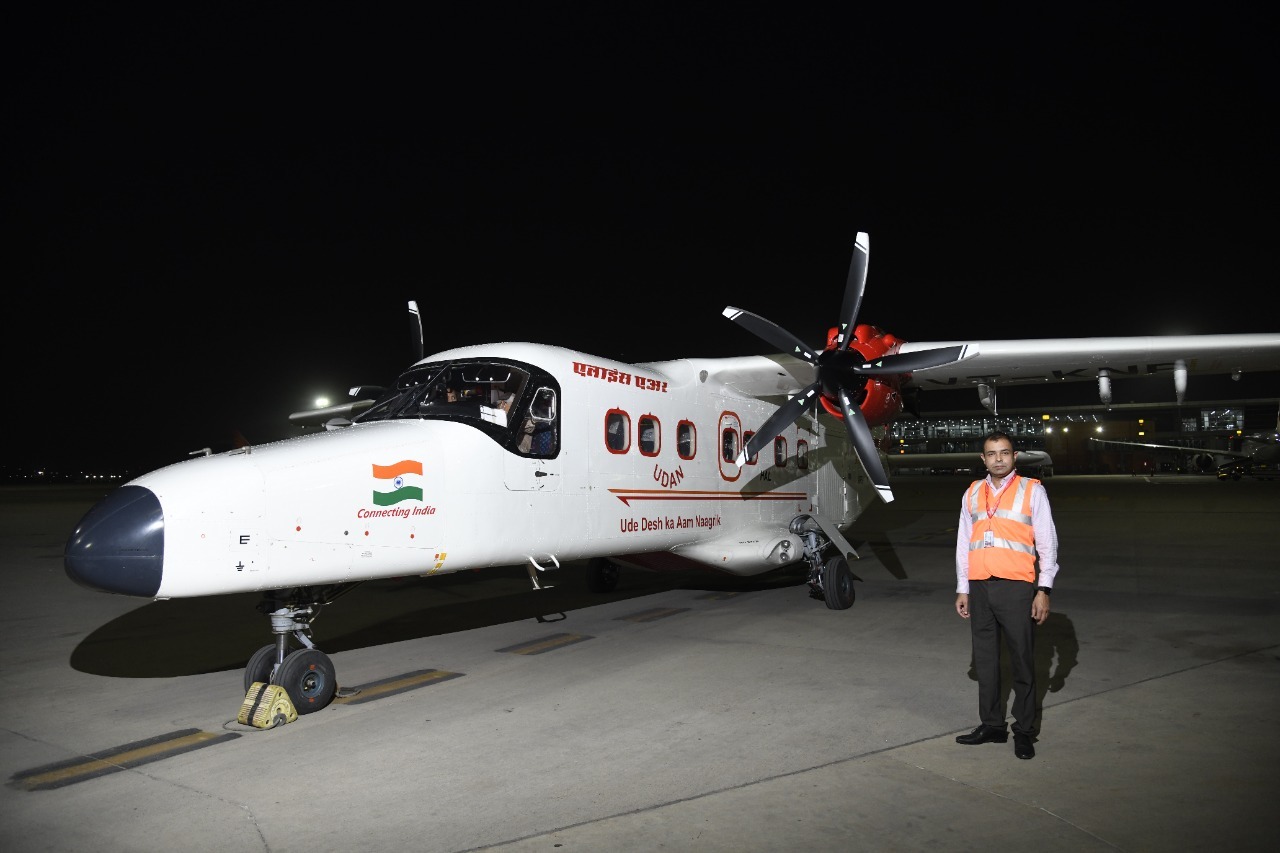
Alliance Air said it took delivery of the first made-in-India Dornier 228 plane on Thursday, April 7 to facilitate connectivity within the north-eastern states.
Centre-run Alliance Air had in February signed an agreement with government-owned Hindustan Aeronautics Ltd to lease two 17-seater Dornier 228 aircraft.
The airline said on Twitter, "Alliance Air takes delivery of its first Made in India Dornier 228. The 17-seater non-pressurized Dornier 228 with an AC cabin capable of day and night operations."
https://twitter.com/allianceair/status/1512105867755556864
The light transport aircraft will facilitate regional connectivity in north-eastern states, it added. To date, Dornier planes were being used by the armed forces only.
ALSO READ - Alliance Air to operate HAL’s Do-228 aircraft under UDAN-RCS
Dornier 228 is a twin-turboprop short take-off and landing utility aircraft which is manufactured by Hindustan Aeronautics Limited (HAL) for the Indian Coast Guard, Indian Air Force and Indian Navy.
HAL describes Dornier 228 as “a highly versatile multi-purpose light transport aircraft.” It also notes that the aircraft has been developed to meet requirements like utility and commuter transport, third level services and air-taxi operations, coast guard duties and maritime surveillance.
Alliance Air receives the first made-in-India civilian aircraft - Dornier 228
The Hindustan-228 is a 17-seat multirole utility aircraft built for various applications such as VIP transport, passenger transport, air ambulance, flight inspection roles, cloud seeding, and recreational activities like para jumping, aerial surveillance, photography and cargo applications.
The aircraft can also be utilised for pollution prevention, troop transport, aerial survey, search and rescue, commuter transport, remote sensing applications, causality evacuation and cargo and logistics support.
The aircraft has a wingspan of 16.97 m, an overall length of 16.56 m, and an overall height of 4.86 m.
Its cockpit is designed to accommodate two crew members and is fitted with duplicate controls and the cabin can accommodate 17 passengers. The aircraft has a wingspan of 16.97 m, an overall length of 16.56 m, and an overall height of 4.86 m.
The first 228 made in India rolled out of the factory in 1985, and by 2014, more than 120 Dornier 228s had been produced. The latest aircraft to enter Alliance Air’s fleet (VT-KNP) was made in 2017 and is almost 5 years old.
To be allowed commercial operations, HAL made modifications to the plane and its equipment, and India’s aviation regulator, the DGCA, issued it a type certificate in 2017.
https://twitter.com/HALHQBLR/status/1512364096959967233
The Dornier 228 is an aircraft well-suited for operations in northeast India. It has the capability of short take-off and landing and can land and take-off from semi-prepared runways.
Alliance Air will soon connect five towns in the North East Indian state of Arunachal Pradesh (Pasighat, Tezu, Ziro, Mechuka, and Tuting) with the city of Dibrugarh in Assam.
The first Inaugural service in the Dibrugarh-Lilabari-Pasighat-Guwahati sector is expected to take place on April 12. India’s Civil Aviation Minister Jytiraditya Scindia and Arunachal Pradesh Chief Minister Pema Khandu will be onboard the inaugural flight.
Read next
Work on Noida International Airport's runway, terminal building and ATC to begin in May
Radhika Bansal
08 Apr 2022
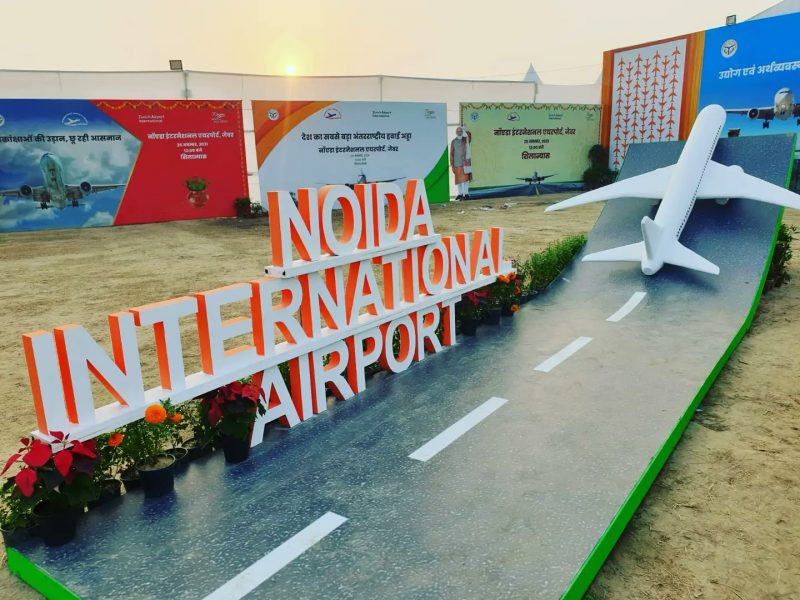
The work on the Noida International Airport's terminal building, first runway, and the air traffic control (ATC) tower will begin next month and is scheduled to be completed by September 2024, officials said on Thursday, April 7.
The development plan of the Greenfield airport was approved by the board of the Noida International Airport Limited (NIAL) on Wednesday, April 6 during its 13th meeting in Lucknow and the project's first phase would cost INR 5,730 crore, the officials said.
Uttar Pradesh government's chief secretary and chairman of the NIAL Board Durga Shankar Mishra chaired the meeting during which he reviewed the progress of the project.
Work on Noida International Airport's runway, terminal building and ATC to begin in May
The project is being developed by the Yamuna International Airport Private Limited (YIAPL), a 100% subsidiary of Swiss firm Zurich International Airport AG.
In the meeting, NIAL CEO Arun Vir Singh informed Mishra that the development plan was examined by an independent engineer firm - Engineer India Limited - and approved by the board, according to an official statement.
Shailendra Bhatia, the airport's nodal officer, who also attended the meeting, said the master plan of the airport was passed on August 17, 2021, and the first phase of development is based on the master plan.
"All approvals for whatever sanctions required, including those regarding financial closures, have been granted by the Board and now no obstacle remains in development work, which is to be done by the concessionaire. The concessionaire has to hire the EPC (Engineering, Procurement and Construction) contractor and complete the construction work for the first phase by September 2024. In the first phase, the airport will have one runway and a capacity of handling 12 million passengers annually. The development cost for the first phase is INR 5,730 crore. The focus will be on developing a green building. Energy and water conservation factors are priorities along with digital technology. The airport will be paperless." Shailendra Bhatia, Nodal Officer, Noida International Airport
Asked which company could be selected for EPC, the officer said the mandate for it lay with the concessionaire as the airport is being built on a public-private partnership (PPP) model. The UP government's mandate includes granting land for the project, which is coming up on the DBOT (design-build-operate-transfer) model by the private partner
He said the work for the air traffic control (ATC) tower, the terminal, and the runway will "definitely begin next month" and currently ground levelling work and construction of the boundary wall of the airport are underway.
The first phase of the Noida International Airport will be spread over 1,300 hectares
The Noida International Airport coming up in Jewar in western UP's Gautam Buddh Nagar district is billed to be India's largest airport upon completion. It will be spread over an area of 5,000 hectares. The first phase will be spread over 1,300 hectares, according to officials.
Currently, three companies are in the fray for the construction of the runway and terminal building — Tata, L&T and Shapoorji Pallonji. Two companies will likely be selected on April 28. The 4km-long and 45-metre-wide runway will be equipped with CAT I, II and III instrument landing systems, which allow aircraft to land in low visibility conditions and during the night.
So far, over 50% of the 17km boundary wall of the airport has been constructed while the site is being cleared so that runway work can begin. The work is expected to be completed in the next couple of weeks.
Read next
HAL signs MoU with Israel's IAI to convert B767 passenger aircraft into mid-air refuellers
Radhika Bansal
08 Apr 2022
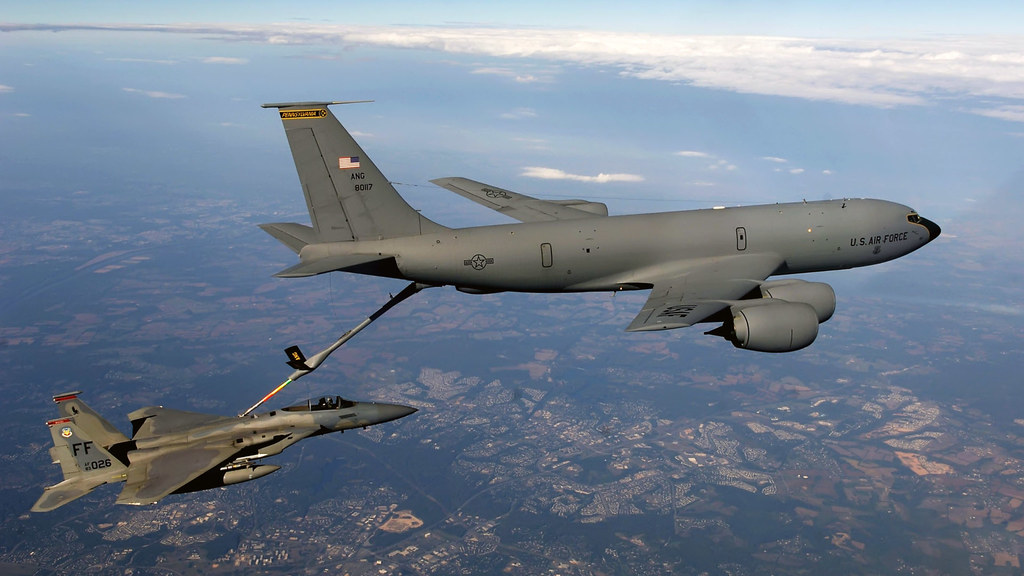
Hindustan Aeronautics Limited (HAL) has entered into an MoU with Israel Aerospace Industries (IAI) to convert civil (passenger) aircraft into multi-mission tanker transport (MMTT) aircraft in India, the state-run aviation firm announced Wednesday, April 6.
After years of trying to buy mid-air refuellers for its military, India is now looking to convert existing Boeing 767 passenger aircraft into tankers.
https://twitter.com/HALHQBLR/status/1511631642066300933
Under the pact, HAL will convert civil aircraft into mid-air refuelling aircraft with cargo and transport capabilities. Sources said that the contract pertains to converting the Boeing 767 passenger aircraft, which is also used by the Italian and Japanese militaries.
"We are glad to join hands with our long-standing partner IAI in this venture of MMTT conversion business which is one of the strategic diversification avenues identified by HAL."R Madhavan, CMD, HAL
The scope of MoU also covers "passenger to freighter aircraft" conversion along with MMTT conversions.
Boeing has a specialised tanker called KC-46 Pegasus, which is a variant of the Boeing 767. The conversion of passenger aircraft into cargo and tankers has been a lucrative business for IAI, which has emerged as a key player in this business.
"We are proud to come together with our counterparts to bring our best value MMTT solution in India while utilising local resources to manufacture and market the platform. By collaborating with HAL and bringing conversion directly to India, we are supporting the 'Make in India' campaign".Boaz Levy, President and CEO, Israel Aerospace Industries (IAI)
Mid-air refuelling has been a critical capability gap for the IAF. This technology gives a fighter jet the ability to cover enhanced distances without having to land to refuel.
India currently uses six Russian Ilyushin-78 tankers, first inducted in 2003, but they are facing maintenance and serviceability issues.
There have been efforts underway to procure new mid-air refuellers, with both Boeing and Airbus in contention. India has been in talks with France to lease one A330 multi-role tanker transport (MRTT) from the French Air Force for training purposes under a government-to-government deal.
Mid-air refuelling gives a fighter jet the ability to cover enhanced distances without having to land to refuel.
The sources said leasing, for a limited period, is still being looked at, but there are no specialised tankers that will be bought. “It is much cheaper to convert passenger aircraft into tankers rather than buy new ones,” a source said.
India is looking at converting at least six aircraft into tankers. The development is a setback to Airbus, which had emerged as the frontrunner in the IAF’s plans to get mid-air refuellers.
Sources said while the contract in question is between HAL and IAI, Boeing will be a key component of any future programme to convert passenger aircraft into tankers since they are the original equipment manufacturer (OEM).
HAL will convert civil aircraft into mid-air refuelling aircraft with cargo and transport capabilities.
Lohia Aerospace Systems, part of the Lohia Group, in Uttar Pradesh’s Kanpur, has a tie-up with the IAI through its Israeli subsidiary Light and Strong Ltd, which specialises in the production of aerospace and military carbon-fibre and glass-fibre composite components.
Aerial Refuelling
Aerial refuelling, also referred to as air refuelling, in-flight refuelling (IFR), air-to-air refuelling (AAR), and tanking, is the process of transferring aviation fuel from one military aircraft (the tanker) to another (the receiver) during flight.
Aerial refueling has been considered as a means to reduce fuel consumption on long-distance flights greater than 3,000 nautical miles.
The two main refuelling systems are probe-and-drogue, which is simpler to adapt to existing aircraft, and the flying boom, which offers faster fuel transfer, but requires a dedicated boom operator station.
Aerial refueling has been considered as a means to reduce fuel consumption on long-distance flights greater than 3,000 nautical miles. Potential fuel savings in the range of 35–40% have been estimated for long-haul flights (including the fuel used during the tanker missions).
Read next
Aviation ministry urged for a complete ban on serving non-vegetarian food on domestic flights
Radhika Bansal
07 Apr 2022

Members of Gujarat Animal Welfare Board and the Jain community have written to civil aviation minister Jyotiraditya Scindia, seeking a ban on serving non-vegetarian meals to passengers on domestic flights so that there’s no scope for “strict vegetarians” to be even mistakenly given such food.
“This request is being made on behalf of vegetarian passengers…Strictly vegetarian passengers feel much more distressed and offended when non-veg food is served instead of veg food,” board member Rajendra Shah, who had campaigned against livestock export from India a couple of years ago, said.
The aviation ministry urged for a complete ban on serving non-vegetarian food on domestic flights
The letter was triggered by an alleged incident on a Tokyo-Delhi Air India flight when a vegetarian passenger was allegedly served non-vegetarian food. “This traveller doesn’t even eat onion, garlic and potato. His parents were also offended,” Shah told TOI.
The traveller had reserved a Jain vegetarian meal for himself. However, the two crew members mistakenly served him a non-vegetarian meal, officials said. When the passenger realised that he had been served the wrong meal, he put in a complaint with the crew members.
The airline has grounded the two crew members and initiated a probe into this incident. This isn’t the first time that the air carrier has been involved in a controversy.
The letter was triggered by an alleged incident on a Tokyo-Delhi Air India flight when a vegetarian passenger was allegedly served non-vegetarian food.
Last week, attendants on an Air India London-Ahmedabad flight found that the catering company had messed up the order and mostly uploaded non-vegetarian meals.
The London based catering company had uploaded 28-non-vegetarian and four vegetarian meals onto the aircraft while the correct order was just the opposite - 28 vegetarian and four non-vegetarian meals.
In February 2019, a cockroach was found in the food on the Bhopal-Mumbai flight and the airline company had apologised and initiated corrective action internally.

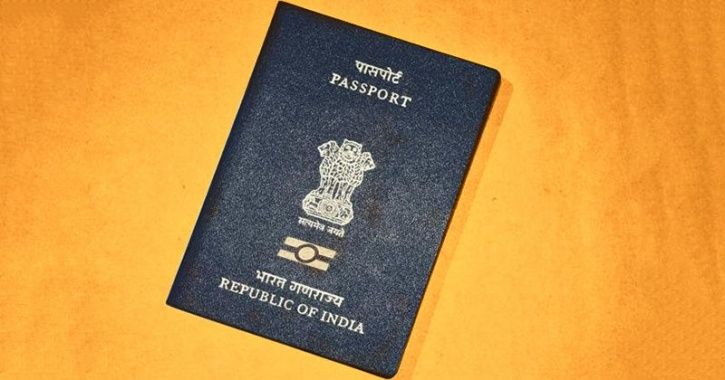
Comment